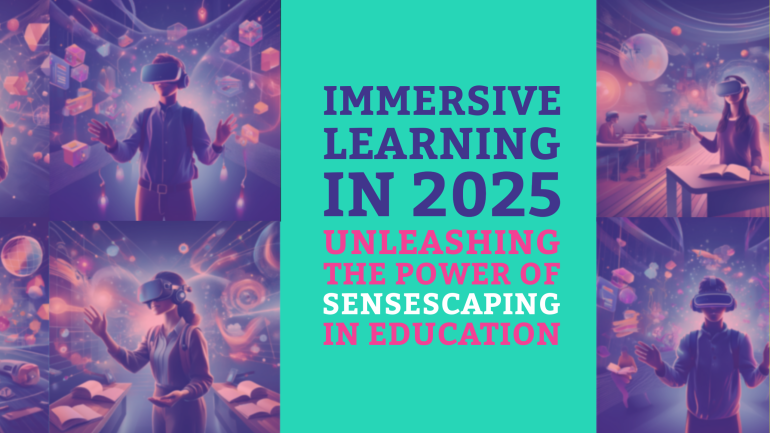Table of Contents
TL;DR: Boosting Educational Success with Targeted Training for Faculty
- Targeted training: Enhancing faculty skills through targeted training can have a significant impact on their effectiveness in the classroom.
- Customized approach: Tailoring training programs to address specific needs and goals of faculty members ensures maximum benefit.
- Professional development: Continuous training and development help faculty stay updated with the latest teaching methods and technologies.
- Improved student experience: Well-trained faculty members can provide a better learning experience for students, leading to improved academic outcomes.
- Collaboration and communication: Training sessions can facilitate better collaboration among faculty members and improve communication within academic departments.
Just like any profession, faculty members in educational institutions benefit greatly from ongoing professional development. Targeted training programs can provide faculty with the skills and knowledge they need to excel in their roles. By focusing on specific areas of weakness or new technologies, training can enhance faculty performance and student outcomes.
Understanding Faculty Needs
Even in institutions where faculty members are highly qualified, there is always room for improvement. Enhancing faculty skills through targeted training is an crucial component of modern educational institutions striving for excellence. Understanding the specific needs of faculty members is crucial to designing effective training programs that address the gaps in their skills and knowledge.
Assessment of Current Faculty Skills
One way to understand faculty needs is to conduct a thorough assessment of their current skills. This can be done through surveys, interviews, and feedback mechanisms to gather insights into their strengths and areas that require improvement. Identifying specific skills that are crucial for their roles and evaluating their proficiency level enables institutions to tailor training programs that are relevant and impactful.
Identifying Skill Gaps in the Academic Environment
One aspect of understanding faculty needs is identifying skill gaps that exist within the academic environment. This involves analyzing the challenges and demands of the ever-evolving educational landscape and determining the skills that faculty members need to navigate these complexities. By recognizing areas where faculty skills may be lacking, institutions can develop targeted training initiatives to bridge these gaps and equip faculty with the tools they need to excel.
It is crucial to prioritize the identification of skill gaps to ensure that training programs are tailored to meet the specific needs of faculty members. By addressing these gaps, institutions can empower their faculty to adapt to changing educational trends, enhance their teaching practices, and ultimately improve the quality of education provided to students.
Designing Effective Training Programs
Principles of Adult Learning
Some of the most effective training programs are those that are designed with the principles of adult learning in mind. Adults learn best when the training is relevant to their roles, self-directed, experiential, and immediately applicable. Training programs should incorporate opportunities for participants to reflect on their own experiences and knowledge, collaborate with their peers, and practice new skills in a safe environment.
Customizing Training for Diverse Faculty Roles
Training programs should be customized to address the specific needs of faculty members based on their diverse roles within the academic institution. One approach is to offer different tracks or modules within the training program that focus on the unique responsibilities and challenges faced by teaching faculty, research faculty, administrative faculty, and clinical faculty. By tailoring the training to the different roles and needs of faculty members, training can be more effective and engaging for participants across the board.
Roles within the faculty require different skill sets and knowledge bases, and training programs should take these differences into account. Providing customized training not only enhances the relevancy and applicability of the content but also increases the overall satisfaction and effectiveness of the training for faculty members.
Core Competencies for Modern Educators
Once again, as the field of education continues to evolve, it is necessary for educators to enhance their skills to meet the demands of modern teaching. This chapter will explore the core competencies that educators should develop to excel in their roles and provide quality education to students.
Pedagogical Techniques and Theories
Educators must be well-versed in various pedagogical techniques and theories to effectively engage students in the learning process. Understanding different learning styles and incorporating active learning strategies can help educators create dynamic and interactive classroom environments. By staying informed about the latest research in education, educators can continuously improve their teaching practices and enhance student outcomes.
Integrating Technology in Teaching
With the advancement of technology, it is crucial for educators to integrate tech tools into their teaching practices. Utilizing online platforms, educational apps, and multimedia resources can enhance student engagement and facilitate personalized learning. Educators who embrace technology in the classroom can create more interactive lessons and provide students with valuable digital skills for the future.
Plus, technology allows for more efficient assessment methods, such as online quizzes and grading systems, which can streamline the evaluation process for educators. By leveraging technology, educators can create a more dynamic and innovative learning experience for their students.
Curriculum Development and Course Design
Teaching is not just about delivering content; it also involves designing engaging and relevant curriculum that meets the needs of diverse learners. Educators should be adept at developing course materials that align with learning objectives and incorporate real-world applications. By implementing backward design principles and incorporating student feedback, educators can create courses that are both rigorous and engaging.
Research Skills and Scholarly Contributions
Another necessary competency for modern educators is the ability to conduct research and contribute to scholarly discussions in their field. Educators who engage in research can stay abreast of the latest trends and developments in education, allowing them to bring fresh insights into the classroom. By publishing articles, presenting at conferences, and collaborating with other scholars, educators can contribute to the advancement of knowledge in the field of education.
The ability to critically evaluate research studies and apply findings to their teaching practice is a valuable skill for educators. By integrating evidence-based practices into their teaching, educators can ensure that their methods are effective and aligned with current best practices in education.
Implementation Strategies for Training Programs
Creating an Inclusive Learning Environment
Many faculty training programs aim to create an inclusive learning environment to cater to the diverse needs of educators. Strategies for achieving this include providing resources and tools that promote diversity, equity, and inclusion in the classroom. Sessions can also focus on fostering empathy, communication skills, and an understanding of different learning styles.
Scheduling and Formats for Training Sessions
Many institutions face challenges in scheduling and determining the most effective formats for training sessions. Strategies include offering flexible scheduling options such as after-hours or remote sessions to accommodate faculty members’ busy schedules. It is important to consider diverse learning preferences and provide a mix of in-person workshops, online modules, and self-paced resources.
Training sessions can be tailored to different faculty cohorts, with advanced topics for seasoned educators and foundational training for newer faculty members. By offering a variety of formats, institutions can ensure that training is accessible and engaging for all participants.
Leveraging Online Platforms for Faculty Development
Many institutions are leveraging online platforms to enhance faculty development opportunities. Formats such as webinars, virtual workshops, and online courses allow for scalability and reach across geographically dispersed campuses. These platforms also enable faculty to access training materials at their convenience and revisit key concepts as needed.
For instance, online platforms can facilitate peer-to-peer learning through discussion forums and collaborative projects, fostering a sense of community among faculty members. Additionally, incorporating multimedia elements such as videos and interactive simulations can enhance the effectiveness of online training programs.
Measuring the Impact of Training
Unlike one-size-fits-all training programs, measuring the impact of targeted training is crucial to determine its effectiveness. Setting benchmarks for success allows institutions to track progress and make informed decisions on faculty development strategies.
Setting Benchmarks for Success
Training sessions should be designed with specific goals in mind. By setting benchmarks for success, institutions can clarify the desired outcomes of faculty training. These benchmarks can range from improved student engagement and academic performance to higher faculty retention rates and increased research productivity. Tracking these benchmarks over time provides valuable insights into the impact of training efforts and supports data-driven decision-making.
Long-term Benefits of Enhanced Faculty Skills
Measuring the long-term benefits of enhanced faculty skills is vital for understanding the lasting impact of training initiatives. Improved faculty skills can lead to a more dynamic and engaging learning environment for students, increased collaboration among faculty members, and enhanced institutional reputation. By tracking the progress of faculty members post-training, institutions can assess the return on investment and identify areas for continuous improvement.
With faculty development becoming increasingly important in higher education, measuring the long-term benefits of enhanced faculty skills provides valuable insights into the overall impact of targeted training programs. Institutions can use this data to make informed decisions on future training initiatives and allocate resources effectively to support continuous professional development for faculty members.
Continuing Professional Development
Fostering a Culture of Lifelong Learning
Keep enhancing faculty skills through targeted training by fostering a culture of lifelong learning. Encouraging educators to see professional development as a continuous journey can greatly benefit both individuals and the institution. By promoting the importance of ongoing learning, faculty members are more likely to seek out opportunities for growth, stay updated on the latest trends in their fields, and continuously improve their teaching practices.
Supporting Ongoing Improvement and Adaptation
Lifelong learning is necessary for faculty members to stay relevant in their roles and continue providing high-quality education. Supporting ongoing improvement and adaptation involves offering various professional development programs and resources tailored to meet the diverse needs and interests of educators. This ensures that faculty members have access to relevant training that can help them address current challenges, incorporate new technologies, and enhance their teaching methods to better engage students.
Another important aspect of supporting ongoing improvement and adaptation is providing feedback mechanisms that allow faculty members to reflect on their performance and receive guidance on areas for development. Implementing a culture of feedback and self-assessment can further empower educators to take ownership of their growth and strive for continuous improvement.
Final Words
Ultimately, enhancing faculty skills through targeted training is crucial for promoting student success and academic excellence in educational institutions. By providing faculty with the necessary tools and knowledge to improve their teaching techniques and methods, institutions can create a more engaging and effective learning environment for students. This, in turn, can lead to higher student retention rates, improved student performance, and overall satisfaction with the educational experience.
FAQ
Q: What is the importance of enhancing faculty skills through targeted training?
A: Enhancing faculty skills through targeted training is crucial for ensuring that educators stay up-to-date with the latest teaching methods, technology, and educational trends. It helps improve the quality of education and student learning outcomes.
Q: What are some common areas of targeted training for faculty development?
A: Common areas of targeted training for faculty development include effective classroom management, technology integration in teaching, assessment and feedback strategies, inclusive teaching practices, and professional development in their subject area.
Q: How can targeted training benefit both faculty and students?
A: Targeted training can benefit faculty by enhancing their teaching skills, increasing their job satisfaction, and fostering a culture of continuous learning. For students, it can lead to a more engaging and effective learning experience, improved academic performance, and better preparation for their future careers.
Q: How can institutions support faculty in their professional development through targeted training?
A: Institutions can support faculty in their professional development through targeted training by providing access to workshops, seminars, conferences, online courses, mentoring programs, and resources for continuous learning. Creating a supportive environment that values and encourages professional growth is also imperative.
What are some best practices for implementing targeted training programs for faculty?
A: Best practices for implementing targeted training programs for faculty include conducting needs assessments to identify areas for improvement, offering a variety of training formats to cater to different learning styles, providing opportunities for practice and feedback, and evaluating the effectiveness of the training to make necessary adjustments for continuous improvement.




